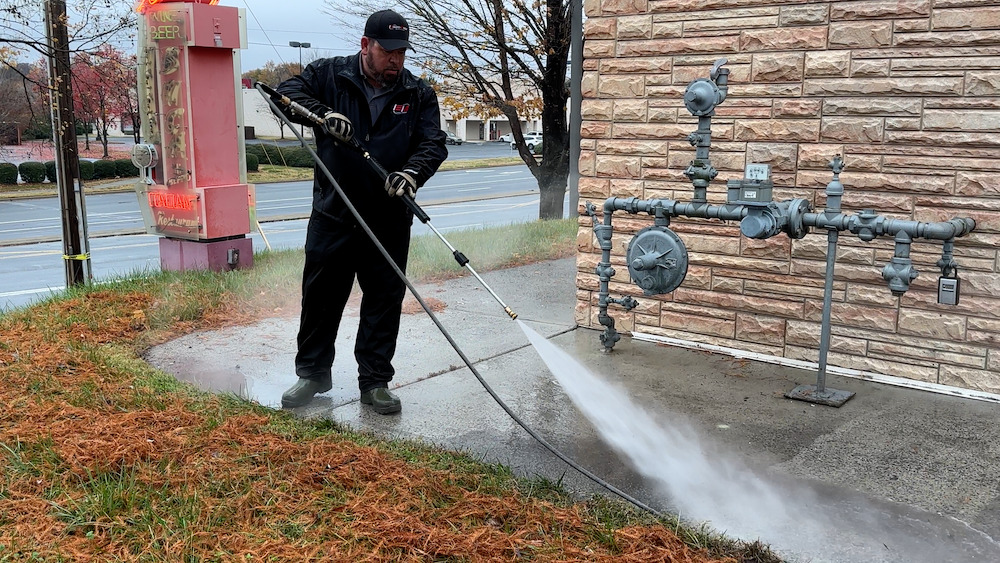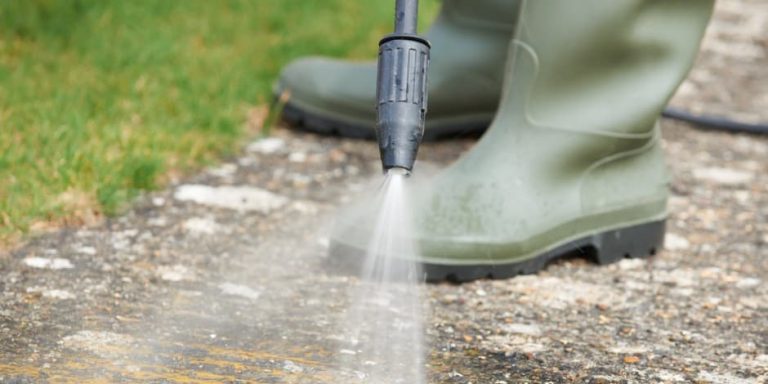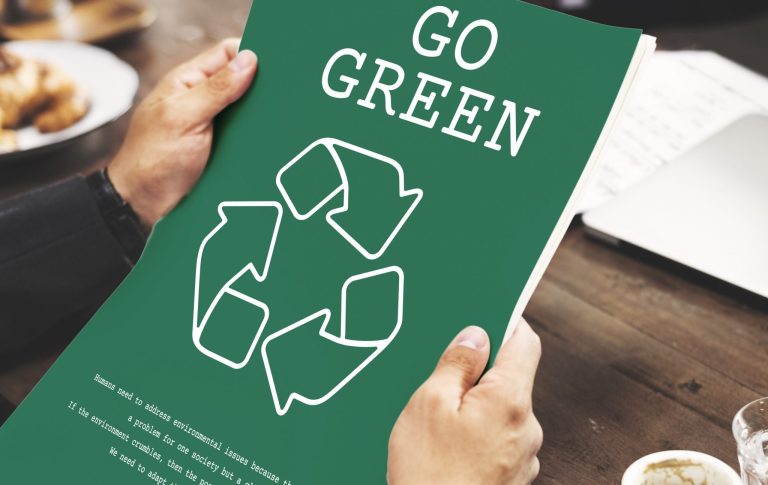
Power washing is praised for its ability to remove grime, mold, oil, and years of dirt with little more than high-pressure water and some detergent. It’s fast, effective, and often oddly satisfying. But beneath the spotless surfaces and clean driveways lies a major concern: water waste. 🌍🚱
Whether it’s a weekend DIY job or a full-scale commercial operation, pressure washing uses a staggering amount of water—and that usage adds up quickly. In a world where water scarcity is becoming more urgent, we have to ask ourselves: how much is too much?
📈 The Numbers Behind Power Washing Water Use
To truly understand the environmental cost, let’s break down the numbers. A standard residential pressure washer uses between 2 and 4 gallons per minute (GPM). Here’s what that looks like in action:
- 30-minute wash = 60 to 120 gallons
- 1-hour wash = 120 to 240 gallons
- Full house exterior wash = 300 to 500+ gallons
- Commercial jobs (parking lots, apartment complexes) = 1,000+ gallons in a single day
To put that into perspective, the average American family uses about 300 gallons of water per day. A single two-hour power wash can exceed an entire household’s daily water use. 😬💧
🏜️ Water Scarcity and Regional Concerns
In many regions—especially the western U.S.—droughts and water shortages are already causing tension. Cities like Los Angeles, Phoenix, and Las Vegas have imposed restrictions on outdoor water use, including lawn watering and car washing.
Power washing, with its high consumption and tendency toward runoff waste, can be seen as an unnecessary luxury in these areas. Municipalities are increasingly cracking down on irresponsible or excessive use of pressure washing equipment.
In some cities, you’re required to obtain a permit before commercial power washing. In others, failing to capture or properly dispose of wastewater can lead to fines or revoked business licenses. ⚖️
💸 The Hidden Financial Cost of Water Waste
While environmental concerns are critical, the economic cost of water waste also adds up. Whether you’re a homeowner or a business owner, using hundreds of gallons of water can inflate your utility bill.
Let’s do a quick cost estimate:
- National average water cost = $0.004/gallon
- 300 gallons used for a driveway wash = $1.20
- Now multiply that by daily commercial use (e.g., 3,000 gallons) = $12/day → $3,000+/year for water alone
That doesn’t include the additional costs of heating water for hot pressure washers, detergents, and runoff fines if wastewater isn’t properly handled.
Water may seem cheap, but when you use thousands of gallons regularly, the numbers grow quickly. 🧾
🌱 Environmental Impact of Water Overuse
The planet doesn’t have an unlimited supply of fresh water. Only about 1% of the Earth’s water is accessible and drinkable. When we use that precious resource to clean patios or sidewalks, it raises a question: is that the best use?
Excessive water use for non-essential tasks like power washing can:
- Deplete local water tables
- Stress municipal water supplies
- Harm aquifers and watersheds
- Contribute to drought conditions
- Limit water access for agriculture and wildlife
Even if water seems abundant in your area, that doesn’t mean it’s renewable at the rate we use it.
Browse Amazon Here For Eco-Friendly Pressure Washing Detergents
🌀 Runoff Worsens the Problem
The issue isn’t just how much water is used—it’s how much is wasted. When you power wash a driveway or building exterior, most of that water doesn’t get absorbed. Instead, it flows:
- Into the street
- Down storm drains
- Into sewers
- Off into ditches and bodies of water
This kind of runoff not only wastes water—it can pick up and carry pollutants into local ecosystems, creating a double threat: wasted resources and environmental contamination. ⚠️
✅ Solutions to Reduce Water Waste in Pressure Washing
If you still want the power washing results without the guilt, there are smarter, more sustainable options available.
1. Use Low-Flow Equipment
Modern pressure washers with adjustable PSI and low GPM ratings (as low as 1.5) still provide excellent cleaning power but use significantly less water.
2. Install Trigger-Controlled Nozzles
Nozzles with trigger shut-offs allow you to instantly cut water flow when not actively spraying, which reduces idle water loss.
3. Use Water-Recycling Systems
Some professional setups use water reclamation tools to collect, filter, and reuse water from the job site—cutting total water use by up to 80%.
4. Pre-Scrub and Sweep
Sweeping dirt and debris before spraying can reduce the time needed with the washer and improve cleaning results with less water.
5. Avoid Overuse
Only power wash surfaces when absolutely necessary. Consider soft washing, spot cleaning, or using biodegradable soaps and scrubbing tools for regular maintenance.
🌎 The Commercial Industry’s Role
Pressure washing companies must also do their part. Sustainable operations should:
- Track and report water usage
- Use high-efficiency equipment
- Capture and dispose of wastewater properly
- Train technicians on eco-friendly practices
- Educate customers on sustainable service options
Eco-conscious businesses are already turning these efforts into a competitive advantage, appealing to clients who care about environmental responsibility. 🌿🏆
🤔 Rethinking Our Water Habits
As climate change and population growth continue to strain water resources, we all have to reassess how we use water in everyday life. Just because you can spray 400 gallons onto your driveway doesn’t mean you should.
Cleaning should be thoughtful, not wasteful. With the right tools and a little mindfulness, we can reduce water waste while still maintaining beautiful homes and businesses. 🏡💧
🌟 Final Thoughts
Power washing will always have its place, but in an age of growing environmental awareness and water scarcity, we must adapt. Whether you’re cleaning your patio or running a pressure washing business, there are smarter ways to conserve water, cut costs, and reduce environmental harm.
The next time you reach for the pressure washer, pause and ask: How much water am I really using? And is there a better way? 💡🌱
Browse Amazon Here For Eco-Friendly Pressure Washing Detergents






